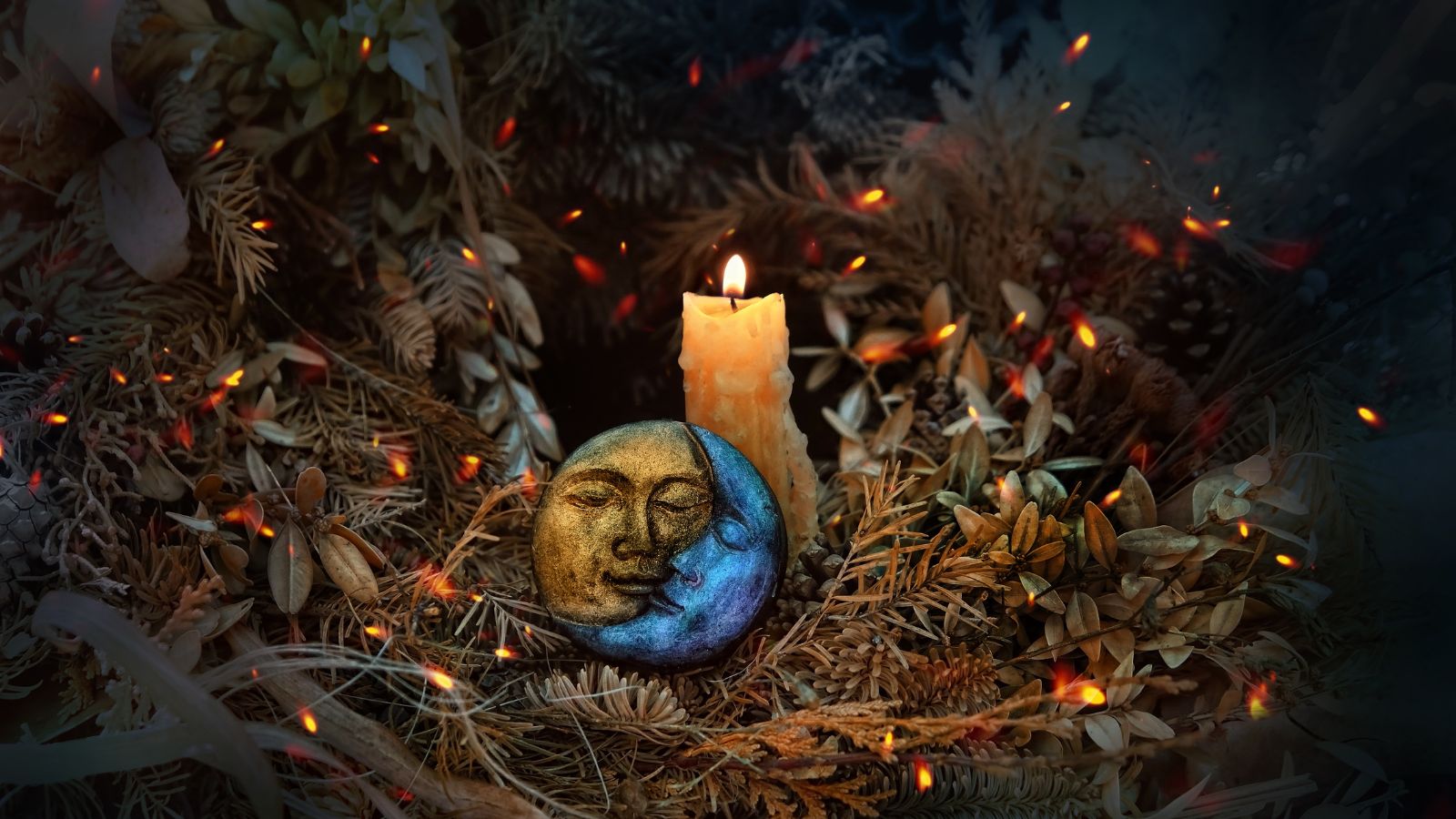Intention: To explore the concept of prayer and its true intentions, and to ultimately reveal that every human being has a practice that resembles prayer.
I’m praying for you.
Let’s just say a quick prayer.
Thoughts and prayers.
Prayer is a universal practice that transcends cultures, religions, and languages. At its core, prayer is a deliberate act of communicating with a higher power, seeking guidance, assistance, or expressing gratitude. Despite the differences in how it is practiced and what it is called, the intention behind prayer remains remarkably consistent across the globe.
For much of the world, prayer is a direct line to God. But we can also strip away the specific religious connotations tied to the term “prayer” and examine it through a global lens. By doing so, we uncover a variety of human expressions aimed at connecting with the divine.
Through this exploration, we seek to reveal the common threads that bind diverse spiritual traditions, showing that our quest for transcendence and connection is a shared human journey.

Understanding Prayer
Prayer, in its most fundamental form, is a conscious effort to communicate with a higher power. This practice can be traced back to ancient civilizations, as evidenced by Sumerian cuneiform tablets and Egyptian hieroglyphs that depict early forms of supplication and ritualistic petitions. Across the globe, prayer manifests in various ways, yet its essence remains the same: an expression of human spirituality and a quest for divine connection.
Historically, prayer has been central in many of the world’s major religions. In Christianity, it serves as a direct line to God, encompassing adoration, confession, thanksgiving, and supplication.
Islam incorporates prayer into the daily lives of its adherents, with the five daily prayers being a cornerstone of faith.
In Hinduism and Buddhism, prayer often takes the form of chants and mantras to focus the mind and invoke spiritual energies.
Geographically, prayer is a ubiquitous practice found in nearly every culture around the world. From the incense-filled temples of East Asia to the quiet chapels of Europe and the open skies of indigenous rituals in the Americas, praying transcends borders and languages. This universality underscores the fundamental human need for spiritual connection and support.

The Power and Perception of Prayer in Abrahamic Religions
Prayer and God seem to go hand in hand—no pun intended. Despite the various ways we pray, there seems to be a widespread connotation that prayer is most directly associated with the three major Abrahamic religions.
Christian Perspectives
In Christianity, prayer is often seen as a powerful tool capable of effecting change, providing comfort, and fostering a deep connection with God. This belief is ingrained from an early age, with many taught that prayer can fix anything.
This can be both uplifting and problematic. On one hand, it offers hope and a sense of control over life’s challenges. On the other, it can sometimes lead to a passive approach to problems, relying solely on divine intervention rather than taking practical steps.
Jewish Perspectives
In Judaism, prayer, or “tefillah,” is a central part of daily life. Jewish prayers often include praise, gratitude, and requests for help. The structured prayer services, especially in Orthodox Judaism, emphasize communal worship and the power of collective prayer. The concept of “kavanah,” or intention, is crucial in Jewish prayer, highlighting the importance of sincerity and mindfulness.
Islamic Perspectives
Islam incorporates prayer into the daily lives of its adherents with the five daily prayers, or Salah, which are a cornerstone of faith. Salah is not just a request for help but a disciplined practice aimed at maintaining a continuous connection with Allah. It serves as a constant reminder of faith and obedience, instilling a rhythm of worship throughout the day.

The Power of Prayer (and Potential Drawbacks)
Despite these nuances, the “power of prayer” remains a profound concept in many religions. It is seen as a way to seek guidance, express gratitude, and find solace in difficult times. The belief that prayer can bring about real change and comfort provides a sense of hope and resilience.
However, we must recognize that prayer, while powerful, should be balanced with action. Faith and effort often go hand in hand, creating a holistic approach to addressing life’s challenges.
When Prayers Go Unanswered
One of the most challenging aspects of prayer is the reality of unanswered prayers. Believers often grapple with the question: why doesn’t God answer every prayer? Various theological perspectives offer different explanations. Some suggest that unanswered prayers are a test of faith, a way to strengthen one’s spiritual resilience. Others propose that God’s will is ultimately beyond human understanding, and what may seem like silence is part of a larger, divine plan.
Is prayer merely an expression of hope? For many, prayer is indeed a form of hope—a way to articulate desires and fears in the context of faith. It allows individuals to place their trust in a higher power, fostering a sense of peace and acceptance. However, when prayers go unanswered, it can lead to feelings of doubt and questioning.
Did we not have enough faith? This question haunts many believers, who may fear their lack of faith is why their prayers were not fulfilled. Religious teachings often stress that faith must be unwavering and that true belief is rewarded, but this can be difficult to reconcile with personal experiences of disappointment.
Philosophically, prayer raises profound questions about human agency, divine will, and the nature of faith. Is prayer a dialogue with the divine or a reflection of our deepest hopes and fears? Can the act of praying itself influence outcomes, or is it more about changing the individual who prays?
In the end, prayer, in its many forms, remains a deeply personal and universally resonant practice. It continues to shape the lives of millions, providing a means to seek comfort, express gratitude, and connect with something greater than oneself.

Paganism and Polytheistic Practices
Outside of the more traditional ‘god-based’ religions, the term “pagan” is often used to define what is considered other. Essentially, a pagan is not Christian, Jewish, or Muslim and may or may not believe in multiple deities.
The term was first used by early Christians who pointed to the Roman Empire as heathen, for their belief in multiple gods and goddesses. This practice of polytheism was in direct conflict with the message that Jesus Christ, and his holy Father, was the one true God.
Of course, ‘pagan’ traditions and polytheism date back far beyond Christianity, which is nowhere near the oldest religion in the world.
Pagan traditions encompass a wide range of practices aimed at connecting with the divine, nature, or spiritual forces. These forms of ‘prayer’ often involve rituals, invocations, and the use of symbolic tools and actions to manifest intentions and seek guidance. Below are some of the key practices associated with pagan spirituality.
Spellcasting
Spellcasting involves using rituals, symbols, and incantations to effect change in the physical or spiritual world. This practice originates from ancient shamanistic traditions and has evolved through various cultural traditions, including European folklore.
Spellcasting is practiced globally in Europe, Africa, and the Americas. It is associated with groups such as Wicca, Paganism, traditional witchcraft, and folk magic practitioners.
Ritual Witchcraft
Ritual witchcraft involves structured ceremonies to invoke spiritual forces and achieve specific outcomes. Traced back to pre-Christian pagan traditions and medieval European witchcraft, this practice is now found worldwide, particularly in Europe and North America. Modern witchcraft traditions, including Wicca and eclectic witchcraft, are closely linked to ritual witchcraft.
Invocation
Invocation is the act of calling upon a deity or spirit for support or inspiration. Rooted in ancient rituals, invocation has been used in Greco-Roman ceremonies and medieval Christian rites. It is commonly found in Western religious practices and occult traditions, associated with Christianity, Paganism, ceremonial magic, and various spiritual movements.
Divination
Divination involves seeking knowledge of the future or the unknown by supernatural means. An ancient practice seen in various cultures, including Roman augury and Chinese I Ching, divination is practiced globally, with distinct methods in different cultures. It is associated with various pagan traditions, including Druidry, and modern occult practices.
Energy Work
Energy work focuses on manipulating spiritual or life force energy for healing, protection, or manifestation. Ancient practices like Chinese Qi Gong and Indian Pranayama exemplify early energy work traditions. Widely practiced in Asia and gaining popularity in the West, energy work is associated with Reiki practitioners, traditional Chinese medicine, and holistic healers.
Norse Practices
Norse pagan traditions include Seidr, Galdr, and Blót. Seidr is a form of shamanism involving trance work and communication with the spirit world, practiced by both men and women, notably the völvas. Galdr refers to chanting magical spells and incantations used for protection and healing.
Blót is a sacrificial ritual that involves offering goods or animals to the gods and seeking favor or guidance. These practices are deeply rooted in the pre-Christian spiritual traditions of Scandinavia and are associated with the Norse pantheon, including deities like Odin and Freyja.
Shamanism
Shamanism involves engaging with the spirit world through altered states of consciousness, often achieved via rituals, drumming, and dance.
This ancient practice has roots in indigenous cultures worldwide, including Siberia, the Americas, and parts of Africa. Shamans act as intermediaries between the physical and spiritual realms, performing healing ceremonies and seeking guidance from spirits.
Shamanism is associated with various indigenous spiritual traditions, emphasizing a deep connection with nature and the cosmos.
Voodoo
Voodoo, or Vodou, is a spiritual practice originating in West Africa and transported to the Americas through the transatlantic slave trade. It blends African spiritual traditions with elements of Christianity and indigenous beliefs. Central to Voodoo are rituals invoking spirits, known as loa, through music, dance, and offerings.
Voodoo is predominantly practiced in Haiti, Louisiana, and parts of West Africa. It is associated with a rich pantheon of spirits and emphasizes the interconnectedness of the physical and spiritual worlds.

Modern, Agnostic, and Atheist Practices
In contemporary society, even those who identify as agnostic or atheist may engage in practices that resemble traditional forms of prayer. While these practices might not involve appealing to a higher power, they often serve similar purposes, such as seeking clarity, expressing gratitude, or setting intentions. In that light, are they all that different in intention?
Meditation
Meditation is a widely practiced method of focusing the mind and achieving a state of calm and clarity. Originating in ancient spiritual traditions, meditation has been embraced by secular communities for its mental and physical health benefits.
Techniques such as mindfulness and transcendental meditation do not require belief in a deity and can be practiced by anyone, regardless of religious affiliation.
Affirmations
Affirmations involve repeating positive statements to oneself to foster a desired mindset or behavior. Rooted in psychological principles rather than religious doctrine, affirmations are used in self-help and personal development practices. This technique encourages individuals to focus on their goals and cultivate a positive outlook.
Manifestation
Manifestation, popularized by the New Age movement, is the practice of bringing one’s desires into reality through focused intention and visualization. While some may attribute the success of manifestation to spiritual forces, others see it as a psychological tool that harnesses the power of positive thinking and goal-setting.
Gratitude Journals
Keeping a gratitude journal is a modern practice where individuals regularly write down things they are thankful for. This practice helps cultivate a sense of appreciation and positivity, similar to the way traditional prayers of thanksgiving function in religious contexts. It is widely used in therapeutic settings and personal wellness routines.
Secular Rituals
Secular rituals, such as lighting candles, creating vision boards, or participating in community events, can also serve functions similar to prayer. These activities provide a sense of connection, intention, and reflection without necessarily invoking a higher power.
Sending Good Vibes
The phrase “sending good vibes” has become a common way for people to express support and positive intentions without religious connotations. This modern vernacular acknowledges the power of positive energy and goodwill. While it may lack the formal structure of traditional prayer, it serves a similar purpose in offering comfort and encouragement to others.

Let Us Pray
Understanding prayer as a concept allows us to see the commonality in human spiritual practices. Despite differing doctrines and rituals, the underlying intention of prayer—to seek guidance, express gratitude, and connect with something greater than oneself—remains a shared human experience.
If you come from a background where prayer was not always used in the highest good, know that there are many ways to celebrate life, express your immense thanks, or simply connect with your own inner knowing.
Don’t give up on prayer, and call it whatever you wish. Keep the hope alive, have faith in yourself and the goodness of the world around you, and stay rooted in your truth.
Amen.














